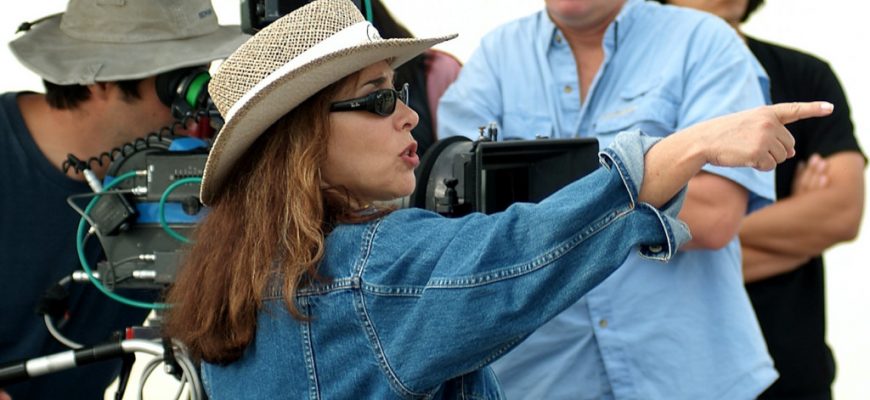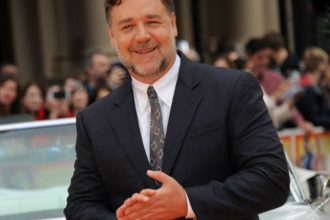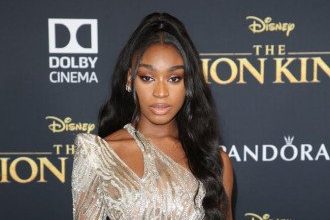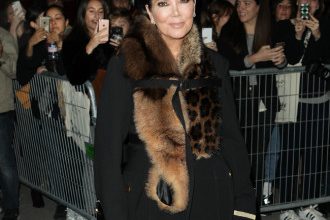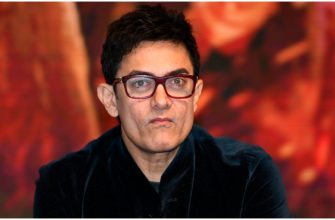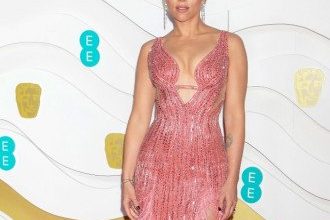For a certain generation of women, director Susan Seidelman’s second feature, “Desperately Seeking Susan,” is a formative text, an indelible record of New York in the ‘80s, from Madonna’s iconic hair bow to Rosanna Arquette’s spirited performance as the lead. With its cast of New York underground habitués, and fizzy pace set to the tune of Madonna’s “Into the Groove,” “Desperately Seeking Susan” was a fashion-forward change of pace from the teen comedies and slick action fare of the time.
Seidelman’s first feature, the scrappy microbudget “Smithereens,” shocked everyone when it was selected as one of the first American independent films to be accepted into official competition at the Cannes Film Festival. With a cast that included proto-punk rocker Richard Hell, the 1982 “Smithereens” captured the East Village in all its grungy, pre-gentrification glory, and has become a cult classic.
A die-hard New Yorker, Seidelman never felt comfortable in Hollywood. The studios kept offering her movies about cheerleaders, and she heard horror stories about controlling producers. In some ways, she feels that aligning herself with the New York independent community and picking the right partners shielded her from the worst of the sexism experienced by women directors working in mainstream Hollywood.
Her other 1980s films included “Making Mr. Right,” “Cookie” and the Meryl Streep and Roseanne Barr starrer “She-Devil,” which Seidelman shot while pregnant with her son. In the 1990s and 2000s, she directed a mix of Showtime movies and indie features like “Boynton Beach Club.”
Just as she was struck when she read the script for “Desperately Seeking Susan,” when she got the offer to direct the “Sex and the City” pilot, she immediately felt it was the right project at the right time. The show captured an equally vivid slice of New York life, and became a pivotal cultural moment.
Now she’s diving back into television, with a project hatched during the pandemic. In honor of Women’s History Month, we talked to the pioneering independent director.
What was it like working in New York at that time?
It was right when things were kind of changing from that hippie period into something different. Everyone was influenced by what was going on culturally and the changes we were seeing in that neighborhood. When I made “Smithereens,” which was in some ways an extension of my NYU film school days, it was primarily the same crew I had worked on with my student films. We never said, “Hey, we’re going to make a movie and it’s going to be in the Cannes Film Festival.” In some ways I think that naïveté is what enabled me to do it because I didn’t really know all the obstacles involved in getting into the film industry.
When you were at NYU, were there very many other women who aspired to be filmmakers?
There were 35 students in the graduate program and there were five women. Then when I taught at NYU up until around 2017, I think the classes were pretty much 50/50 by that point.
Susan Berman in 1882’s “Smithereens”
New Line Cinema/Courtesy Everett
When you started to make “Smithereens,” were you aware of many women working in film?
New York really was slightly disconnected from L.A., I didn’t know who the agents were, what the production companies were. I went to film school around the same time as Jim Jarmusch, and I think the Coen brothers were also there and Amy Heckerling.
There were women who were also doing very low budget films like Beth B, who was an underground filmmaker with her husband, Scott B, and Bette Gordon and Lizzie Borden were around. We all knew of each other’s work.
What was it like while you were filming in the East Village? Why did you want to cast Richard Hell?
The way I saw my job was to capture the things that I thought were interesting about Richard Hell as a persona and get them on celluloid. It was shot over a year in three different time periods because the main actress broke her leg (during the production), so she was a cast for five months.
How did you happen to get “Smithereens” into Cannes?
Film school back then was so different than film school now. We learned some basic editing skills and we were around a bunch of people who like watching movies and talking about films, but there was no kind of practical element about what you do after you make a film. But I had heard of the Cannes festival, because this is also pre-Sundance. I literally just sent a postcard to Cannes asking for an application form. Weeks went by and I got a call from a woman saying, can you bring your film to this address? And I dropped it off. And then, a few days later, I got a call from a guy who wanted to put it in the Director’s Fortnight. Then I got another call from a guy named Gilles Jacob who was running the whole shebang, saying “I just saw the film. Would you mind if I took it out of the Director’s Fortnight and put it into the official competition?” This was sort of mind blowing.
What was it like when you got to France?
Alice in Wonderland! We showed up with this ragtag little group and there was this other world out there. When you walked down the Croisette, this was the time of Menahem Golan and Cannon Films. They had like 50 posters for all the movies that they said that were going to make that they might not make, the whole thing was slightly surreal, but in a wonderful kind of weird way.
Did that lead to being able to make “Desperately Seeking Susan”?
When I was in Cannes, I started getting calls from agents right to the hotel where I was staying. So I signed with this agency and I started getting scripts that were being submitted to me through production companies in L.A. And they were all these mostly just kind of silly teen comedies.
It was the “Porky’s” era, right?
That’s what it was like, female “Porky’s.” I knew especially being a female director, trying to transition from doing low budget, independent film, I needed to be kind of selective and passionate about what I chose next, because I heard some horror stories about what was happening to other directors.
After reading a bunch of really dopey cheerleader or sorority scripts, I finally got the script called “Desperately Seeking Susan.” I saw that it was being produced by two women, that it was written by a woman. Rosanna Arquette was loosely attached. And then I read the script and it was amazing because it dealt with the subject matter that was very close to my own — the themes that I’m interested in, like the idea of reinvention, the idea of somebody who comes from outside of New York, coming into New York to be whoever she wanted to be.
What I really liked is that they were first time producers and I didn’t feel like I was going to be bullied. I didn’t feel like I’d have some heavy presence looking over my shoulder and that would stop me from doing what I felt like I wanted to do.
How did casting the Susan part come about?
We first started out going the more traditional route, auditioning young up-and-coming actresses. I remember some of them were like Ellen Barkin, Jennifer Jason Leigh, Melanie Griffith. They were all wonderful. But for me, coming out of downtown Manhattan, I had enjoyed working with Richard Hell, I thought it would be good to work with somebody who had a persona.
I thought maybe we should look at the music sector to see if there was somebody there who could be interesting. Living downtown about two streets away from Madonna, I knew who she was. She had a video on MTV, I could see she had something. So I talked Orion into letting me do tests with her, and the screen test was successful. They liked her.
During the nine and a half weeks that we were shooting, her “Like a Virgin” album got released and it was like watching a skyrocket. She was on the cover of Rolling Stone magazine and watching that rise so quickly was fascinating. By the time we were in our last week of shooting, there was security and all the things that are needed when you shoot with stars on the street.

Rosanna Arquette and Madonna in “Desperately Seeking Susan”
©Orion Pictures Corp/Courtesy E
What was it like working as a woman director in the ‘80s?
I’m a New Yorker and I’ve lived there for 45 years. The studio that I had to answer to was Orion, which was more New York-based that the other studios. They also had a more independent spirit in the sense that they were very respectful of directors – they worked with Jonathan Demme and Oliver Stone, and I was working for them because they basically kind of left me alone once they approved the cast and the budget.
But I went out to take meetings at the studios in L.A. and there were a couple of weird things – I don’t drive, or I’m a bad driver. So just getting around. Also, I’m five feet tall. When I walked into the room and there were all these studio executives there, I know that the first thing they thought was, “Wait that’s a girl, that is a little girl.” I could see it in their eyes.
Some of your films, like “She-Devil” with Meryl Streep and Roseanne Barr, had ahead-of-their-time themes. Do you feel like people maybe weren’t ready for that kind of movie?
I don’t want to sound too defensive or anything like that, but I do think that. I’ve been sent articles re-evaluating those stories, particularly “She-Devil,” from a younger set of eyes and a different perspective, and they interpret the film very differently. I think that part of it is that it was a female revenge comedy, but a lot of the subtext was about our culture’s obsession with power and beauty and money and glamour and all that kind of stuff. So it was a stab at that, which might have been somewhat misinterpreted by some people at that time. It also starred an overweight woman.
I remember reading reviews that talked about physical stuff where I just went, whoa. I’d say that 90%, 95% of the critics were male back then.
Did you think at the time that you would keep being offered more features, the way male directors often seem to just keep getting offered features no matter how much money their films make?
Two things happened. One is I was disappointed by the response to “She-Devil.” The other was that at the time I was making the movie, I was pregnant. I had our baby the week it was released. So I have a distinct memory of literally being in the labor in the hospital room, watching Siskel and Ebert review the movie as I’m going through contractions.
That’s crazy.
Roger gave a thumb’s up because he likes underdog stories. Siskel gave a thumbs down. So it was very surreal. As a female film director back then, you really have to want to make a movie to get made. You have to want to make it way more than I think than male directors want to make it. You can’t just go to the golf course or the country club or the boys club and say, Hey, can I get $20 million or whatever? It’s a way more complicated and arduous process. And I liked being a mom.
What did you think when you got the “Sex in the City” pilot script?
It was like a gut thing, just like when I got “Desperately Seeking Susan.” I said, “Yeah, I can do this. This is material I can give something specific and personal to.” I thought the script was so funny and original and bold for its time. It wasn’t even so much the sex part of it, it was more the girlfriend part, the fact that the women were saying things that women talk about in the ladies room or just with girlfriends getting drunk.
You did do some other television work, but did you think of going into television directing more intensively?
With “Sex and the City,” it was different, I was involved in helping to create the tone and the look and the template. And that’s fun. In the ‘90s, I directed a few episodes of shows that were already up and running and it’s just not for me, to be totally honest. Since I was there early on in the process, it was interesting to watch how the characters were still evolving. I was involved in the N.Y. casting – which included Miranda and Mr. Big, as well as the secondary roles on those episodes I directed.
Do you have anything in the works?
Like everyone else, I have been stuck at home during this pandemic, and I’ve been working on a limited series that I’m excited about with my writing partner Susan Cinoman. It’s a revisionist, feminist re-telling of the Arthurian Legend, from the point of view of Queen Guinevere — who, in this version, is the hero of the story.
What have you been watching lately?
I was glued to “Fleabag” and “Call My Agent” during the pandemic. I saw “Nomadland,” which is wonderful. And the revenge movie, “Promising Young Woman,” which I thought was bold and strong and would have gotten a negative reaction, had it come out in 1989. It’s also wonderful that more women are writing about films and their reviews and voices and articles are all out there. It’s a long time coming, but thank God.
Смотрите также:
- Джордж Сигал скончался в возрасте 87 лет
- Звезда «Звука металла» Пол Рэйси рассказывает о своих детях с глухими родителями
- Чиветел Эджиофор опасался, что не сможет выучить свои реплики для Locked Down
- Обновление Hearthstone 20.0 — крупнейшее за 7-летнюю историю игры
- Найтвинг наконец сбивает убийц своей семьи
- В рамках продажи фильмов для вечеринок закрываются новые сделки с фильмом «Двое из нас», вошедшим в шорт-лист «Оскара» (ЭКСКЛЮЗИВ)
- NFT Craze входит в мир кино: документальный фильм «Клод Ланцманн» стал первым номинантом на «Оскар», выпущенным в качестве цифрового токена (ЭКСКЛЮЗИВ)

